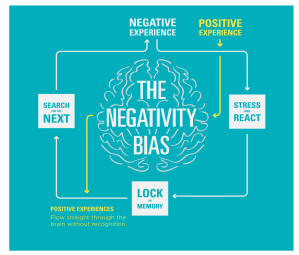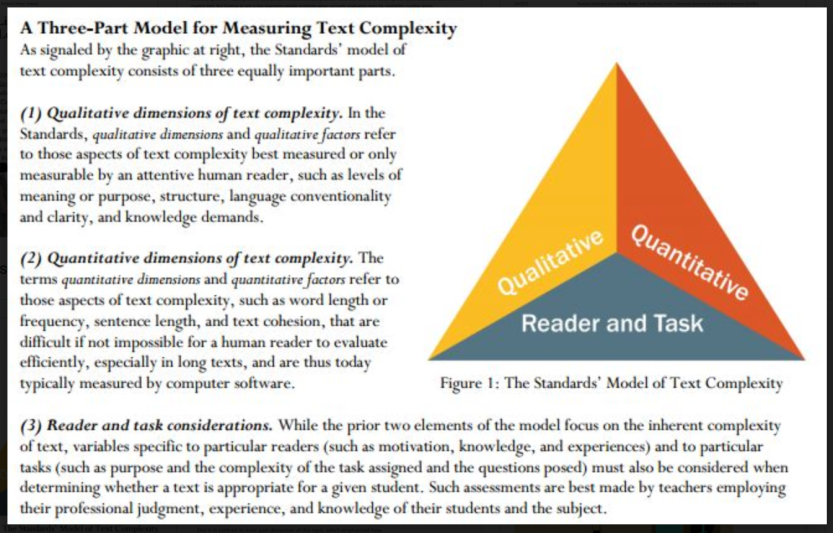“This is a critical juncture in our history. Many young people of color in economically underdeveloped communities are becoming deeply rooted in personal and academic dormancy that interrupts their ability to invest in our fast-moving, ever-changing, increasingly demanding world.”
― Reading for Their Life: (re)Building the Textual Lineages of African American Adolescent Males
These days, my full-time job is to re-establish a community and culture of reading on a campus with roughly 2,300 people. Our student population is majority students of color, many of whom have had to fight to remain interested and invested in receiving a quality education from this system that is so clearly not designed for them. It is all-too-easy for adults to believe in and promote the rhetoric that our students do not care about reading or learning. I am here to help re-write that narrative.
Our students are some of the most curious and passionate readers I’ve ever met when provided with the right support, conditions, time, and encouragement. I have said it before and will say again that no child loves reading like one who has been denied access to great books, time to enjoy them and reading role models in the form of connections to authors and readers who look like them and share their lived experiences. Shouts to NCAS Language arts teachers Benjamin Issac and Mary Clark who brought their classes to the library regularly last year–from the beginning of the year. They also dedicated regular time (during class) to independent reading. As a result, their students experienced the second highest growth in the entire Far Northeast region of our district.
For a lot of people, especially those in charge of making decisions about how free or restrictive an environment where independent reading might occur can be, improved test scores are enough motivation to believe.
Despite the fact that our students do not self-identify as readers, they do know that reading is important for their lives and academic success. I definitely see part of my work as helping shift the way our students see themselves…
If there’s one thing this experience has taught me it is that if you build an amazing collection, the patrons will come.
My initial enthusiasm (about being able to fill a library with books students and teachers will want to read) is still here and very much at work. It gets re-invigorated every time someone comes through to tell me how much they have loved checking out a book from the collection. It’s always something of a miracle to have someone come tell me how much a book has moved them because though I know it’s the desired consequence of building a strong library, one never really knows how people will respond to a collection full of books that I chose. I’m still learning every day about gaps that exist within my own knowledge about what makes a truly inclusive library, and contrary to popular belief, I have not read every book in the collection.
Pages like this page I just learned about on the We Need Diverse Books web site are immensely helpful. I also learn a lot from author friends like Olugbemisola Rhuday-Perkovich and Linda Sue Park and librarian/scholar friends like Laura Jimenez, Edith Campbell, Debbie Reese and Ebony Elizabeth Thomas.
Seeing people experience joy as a result of books they’ve checked out from our library brings me joy. Sharing joy in relation to reading is one of my motivations.
That being said, there are still many students for whom the new library is a confusing or slightly intimidating place. This isn’t surprising if, for some, the only books they read are those assigned for classes and the ratio of punishments to rewards in relation to the act of reading triggers the negativity bias leading some students to see the library as a place that isn’t for them.

It makes sense that if the majority of experiences we have in relation to a given experience, or person, are negative, motivation to engage in said experience or with a particular individual, will decrease.
For many students, negative experiences look like: bad grades for not completing assignments, reading assessments that stoke the fires of insecurity about appropriate “levels”, shame associated with choosing certain genres, nightly assigned reading logs or other assignments that have little to do with what real readers do as part of sharing a reading experience in an authentic way.
A way to re-wire the brain, so-to-speak, in relation to these negative experiences is to build up a bank of positive and empowering experiences. When adults put systems in place that empower students by giving them choices, and support the development of a sense of ownership with regard to the shaping of a reading identities, that can dramatically shift a student’s experience with regard to the act of reading in school.
My motivation last year was to get folks into the library. This year’s focus is to keep them coming back.
Problem: If students cannot find books they want to read, they are less likely to navigate the library frequently and independently.
Solution: Re-arrange the library so students can more quickly and easily find books they will like.
After reading this article about an Indigenous approach to categorizing books, I really began thinking about how many of my students struggled to find books they wanted because a) they didn’t really know what was in the collection b) they weren’t sure what they might like because it had been a while since they voluntarily read a book and c) they felt locked into a mindset that controls choice by telling them they “should” be reading books at a certain lexile/grade level.
We have a new self-service kiosk that will allow patrons to search the catalog independently. The library website is easily available via any device, but I am always trying to imagine new ways to support readers in seeking challenge, taking a risk on a book that might be outside what they know or are used to reading. After all, how do any of us know what to search for if we don’t know what’s possible? Read-alouds, book displays, peer reviewers and regular scavenger hunts and other activities will most definitely be in the works this year.
As we know, reducing the issue of text complexity to one number can be detrimental, especially for older students, and especially for those in environments without a strong independent reading culture.

More info here (as problematic as it is)
In my work with both teachers and administrators developing independent reading programs, these articles have been helpful:
Close Look at Close Reading: Teaching Students to Analyze Complex Texts, Grades K-5
Position Statement on Labeling Books with Reading Levels
There is more work to be done regarding educating both students and teachers about the ways assigning levels to books (not students) can be helpful for teachers but harmful for students.
Why genrefy?
I’m new to librarianship world, but I have had lots of help from district library services staff who aren’t. At the beginning of the year, over the course of five days, Suzi, Lori, Amanda, Terri, Len and I genrefied the library. What does this mean? It was a relatively complex process that I’m going to attempt to simplify here.
Step 1 – Re-arrange furniture in a way that makes sense and accommodates for the size of each genre collection. For example, if our Manga collection gets heavy traffic, it needs to be in a place where it will be highly visible. Quick reads should be shelved next to novels in verse and Humor so that readers will naturally be able to find books that might match interest and reading fluency. Last year I had a six month long battle to get the right double-sided shelves installed in the library that made me pretty unpopular with some people. I’m really glad I didn’t back down because the shelving situation is tight at the moment. Those who work in inventory have a method for calculating how much shelving will be needed for collections of varying sizes, but when the collection is growing as fast as ours is…that’s another story.
Step 2 – Pull a list from Follett Destiny of all titles by genre, over 700 of them were uncategorized which meant Lori gave herself the task of looking at each book and deciding which genre it belonged to. Several collections were temporarily shelved on tables and carts while the stacks were being moved around and re-organized. This process showed me that my Fantasy collection is three times the size of my Romance collection…*insert hand-on-chin emoji*
Step 3 – Pull the books from the shelf and re-shelve them according to genre. This took FOREVER. This means going through the collection once for each genre, reading the shelf, finding books on your list and crossing them off, then moving them to the right shelf. We have close to 6,000 books in the fiction collection…
Step 5 – Hand scan every book in the collection so that the inventory matches what’s on the shelves and every book has been assigned a sub-location that matches genre. Six of us with scanners had this done inside of three hours.
Step 6 – Label the books with genre stickers so they can be re-shelved in the correct sub-location after students check them out.
I was amazed at how fast everything went. Behind the scenes Len moved funding sources and sublocation titles around and set me up so that Destiny looks like this when students log in.

So far, the first thing people noticed is the physical layout of the shelving and the way books are now all over the library rather than confined to one wall. Students are able to quickly find what they want, rather than relying on me to find books for them, which has been really exciting. The way the library was arranged before had all fiction on one wall in alphabetical order by author last name. In order to navigate this system, students needed to a) have strong alphabetization skills–in English b) have the desire to actually comb the shelves looking for something of interest c) know authors they might be interested in–by last name.
One of my big takeaways from last year was the fact that the process for students finding a book they might actually love relied heavily on my personal knowledge of books and authors. From my time in the classroom, I know that creating dependent learners is not the move. So, it has been and continues to be a goal of mine to make sure students do not perceive me to be the only person who can provide access to what’s new and happening on the shelves. I would love for them to lean more on each other through interactive reviews of books and student lead book clubs to community reading initiatives that involve whole families and neighborhoods.
The genrefication process has also taught me that my biases play out in everything from which books to display (I had to check myself at one point when I realized every single book I put on display had a woman of color on the cover) to the genres I select. One important question (among many) that came up–should we ghettoize all the LGBTQ+ novels by putting them together, or put some that are romances in the romance section too so that folks understand, love is love?
I’m always thinking about ways to empower learners in this building, and though I tend to believe that the presence of the library after so long without one is a move toward liberation from oppressive structures for those in our library, it takes much more than simply the existence of the library, a room with books, to move our community forward. The first day the library was officially open, we had so many check-outs, I was struggling to keep up, but each class that comes through has me cautiously optimistic that the culture of and attitude toward reading is slowly shifting in our building. Or maybe, it is becoming what it always has been, a living, breathing thing coming alive after being forced to lie dormant beneath a system that took the time, resources, and dedicated space for reading from us and in so doing, would not let us love books and be free.





As a math teacher, I felt this. I’d love to process this at some point with you.
LikeLike
Let’s talk!
LikeLike